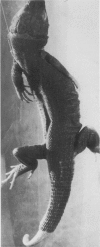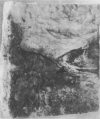Abstract
Burst abdomen, incisional herniation, sinus formation and post-operative wound infection continue to bedevil the surgeon. A prospective study of 1129 laparotomy wounds defined the extent of the problem; 1.7% incidence of dehiscence, 7.4% herniation and 6.7% sinus formation, all significantly associated with wound infection. Mass closure reduced the dehiscence rate from 3.8% to 0.76%. Infection reduced wound strength in a rat laparotomy model due to a decrease in fibroblast concentration and activity. A monofilament non-absorbable suture was shown experimentally to be the most suitable suture for closing infected abdominal wounds. Electron microscopy demonstrated bacteria in the interstices of infected multifilament sutures. A randomised clinical trial comparing polyglycolic acid and monofilament nylon in the closure of abdominal wounds confirmed the experimental findings; polyglycolic acid resulted in a significantly higher wound failure rate with no decrease in sinus formation. A mass closure technique using monofilament nylon is recommended for laparatomy closure and efforts should continue to reduce wound sepsis.
Full text
PDF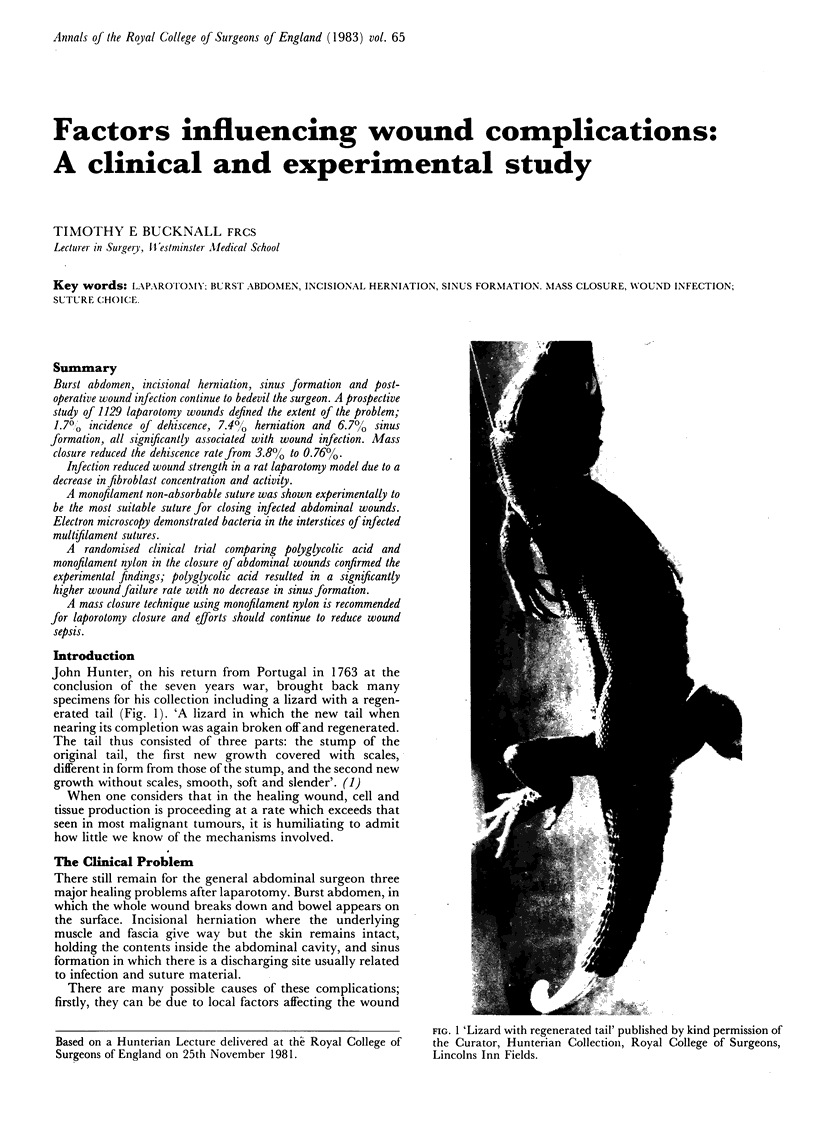
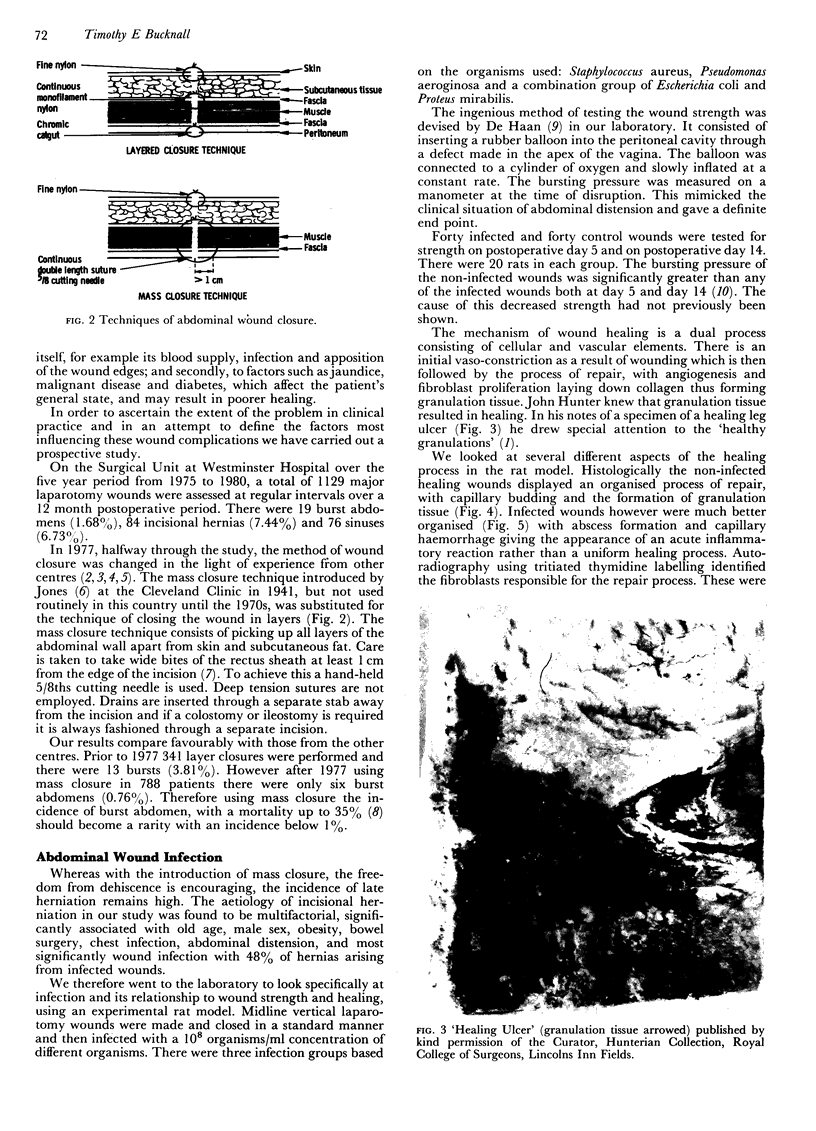
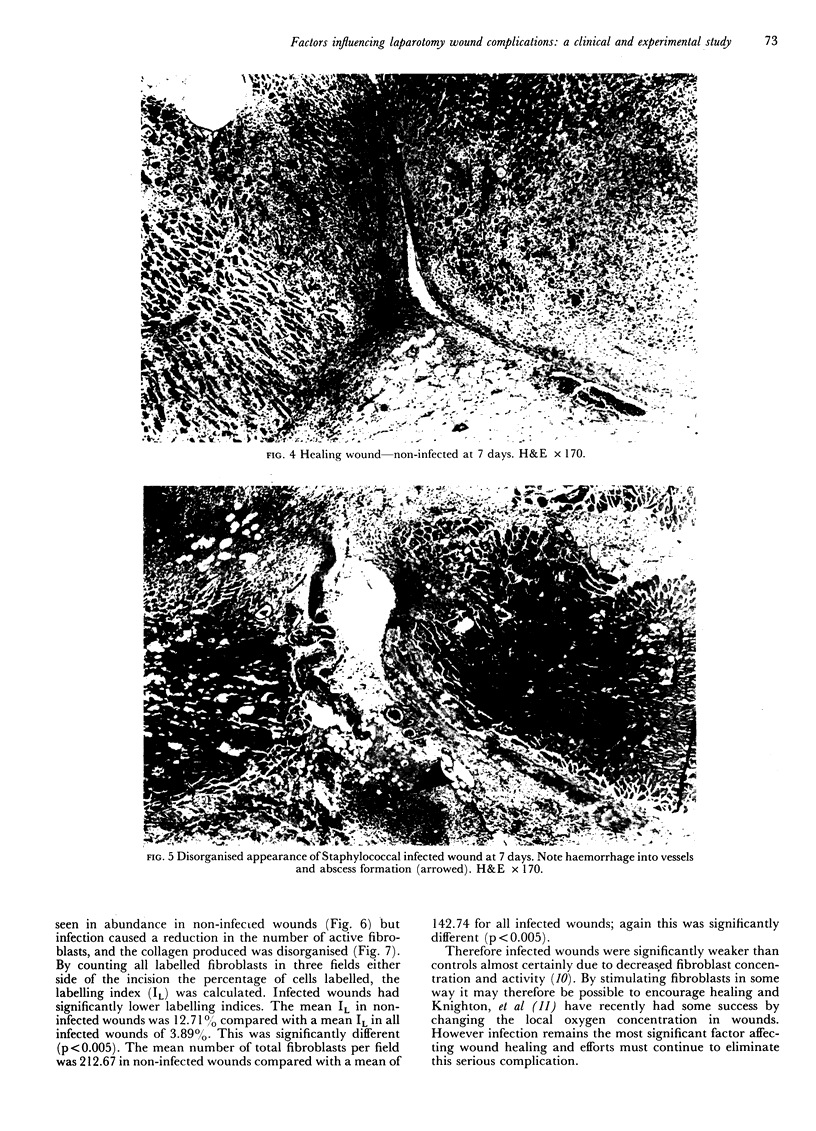
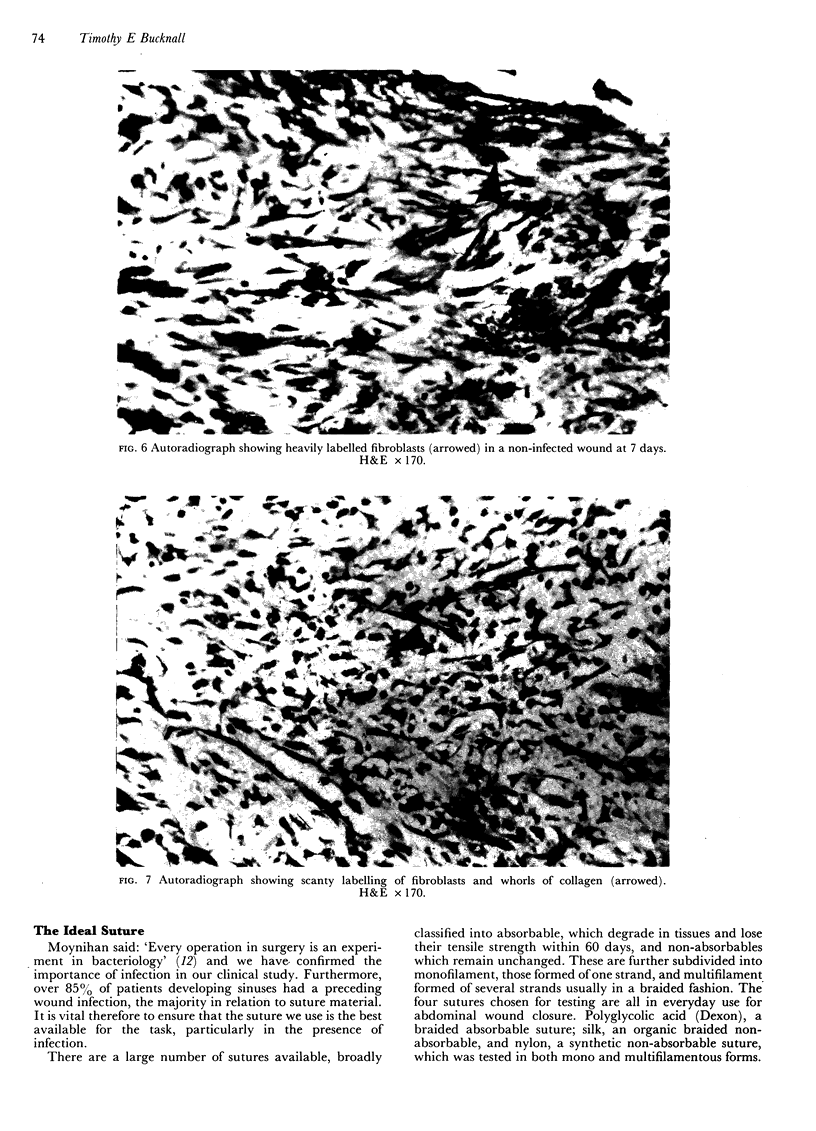
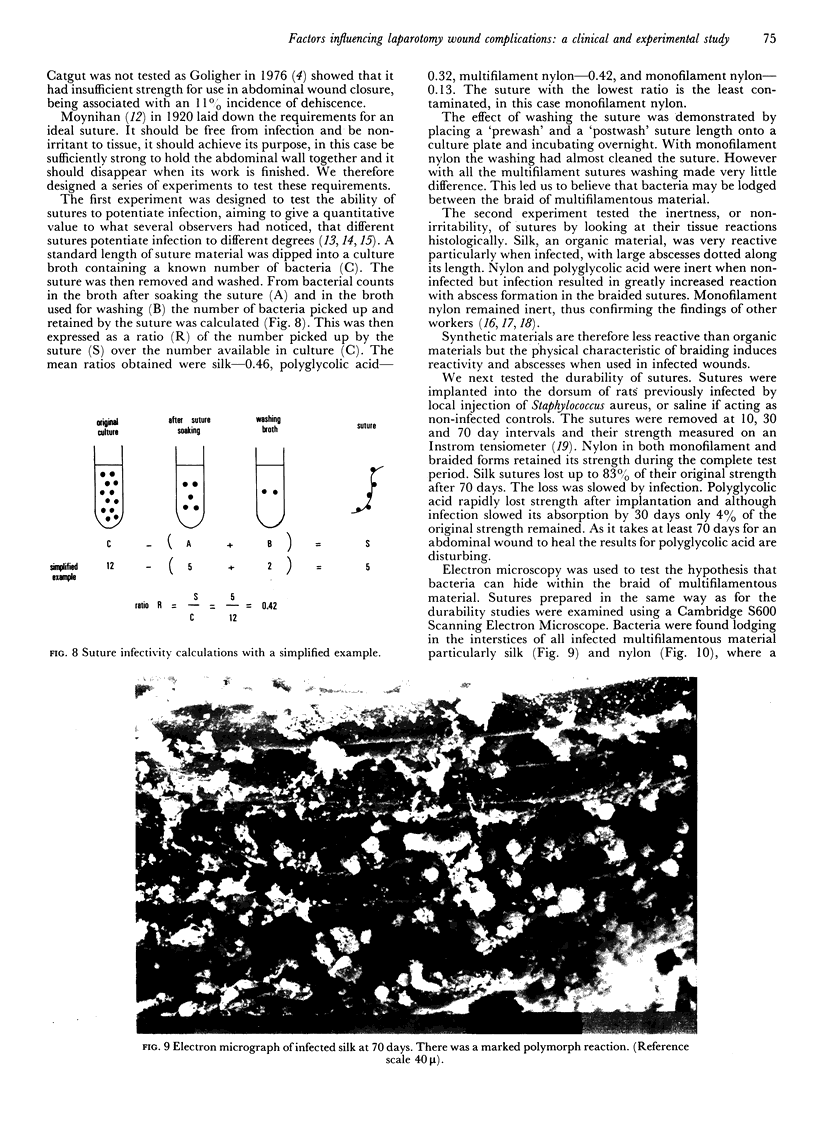
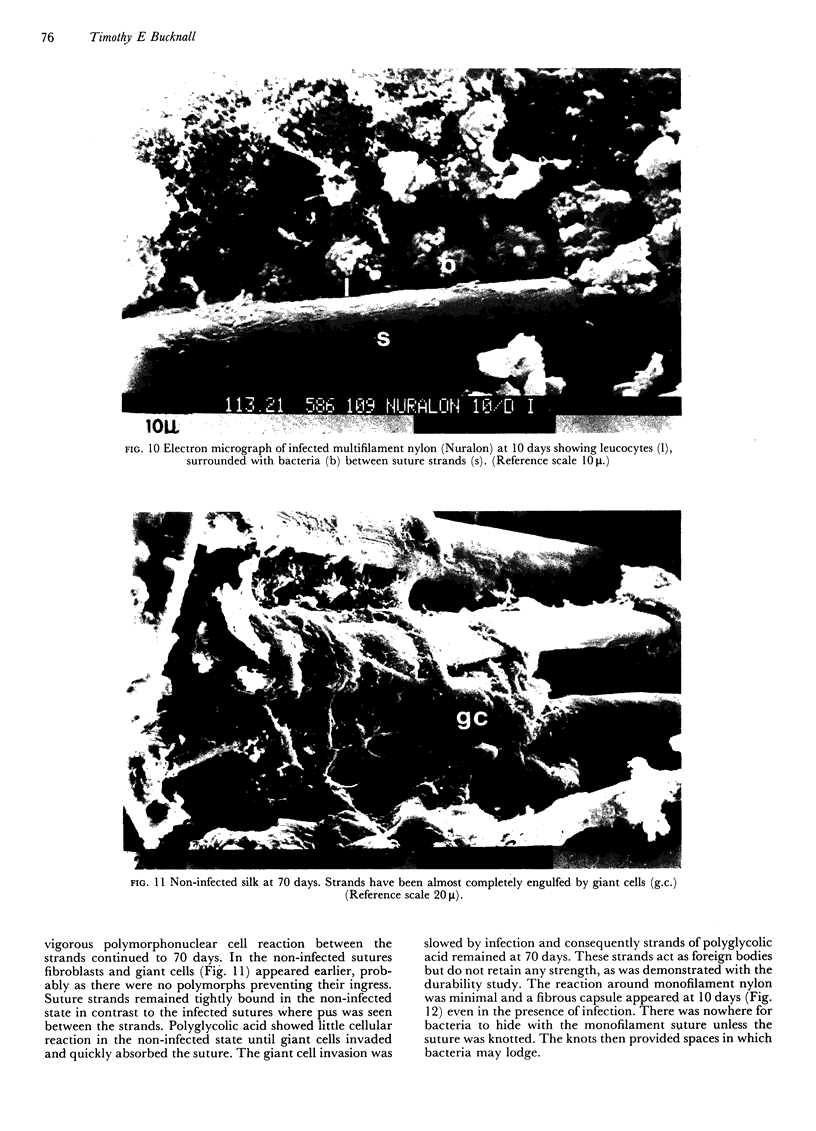
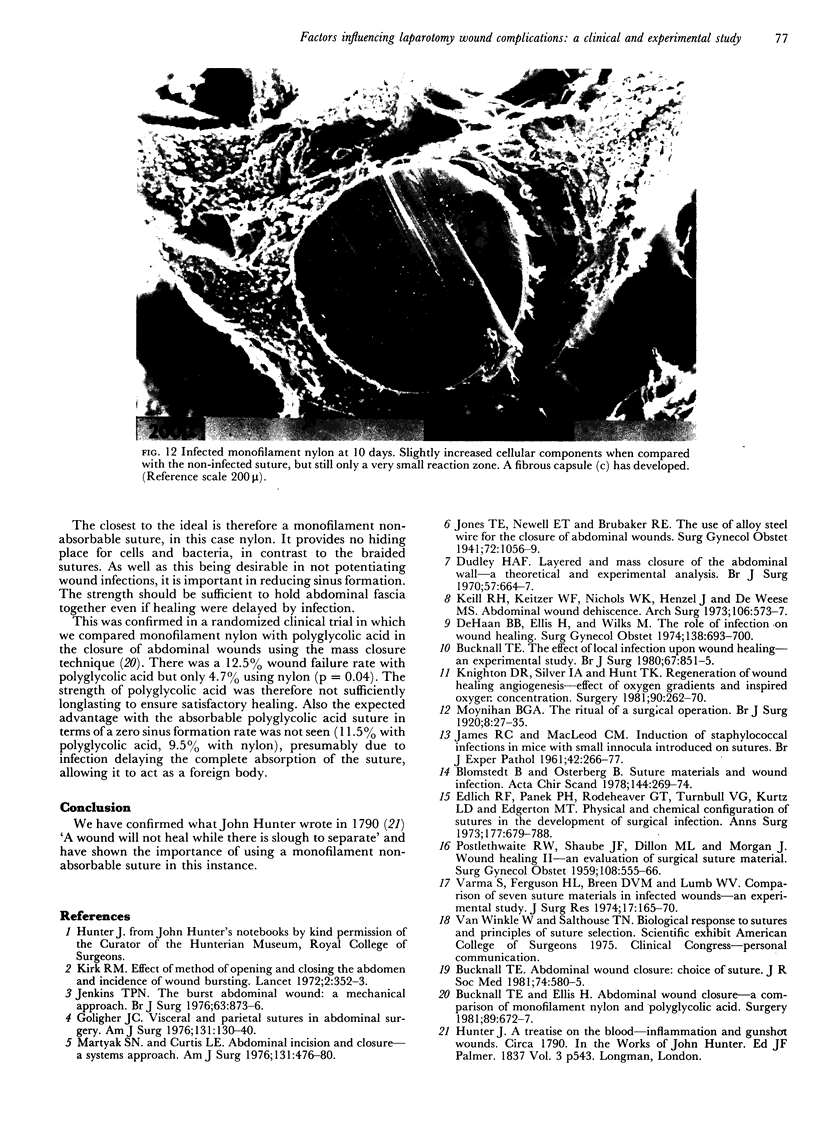
Images in this article
Selected References
These references are in PubMed. This may not be the complete list of references from this article.
- Blomstedt B., Osterberg B. Suture materials and wound infection. An experimental study. Acta Chir Scand. 1978;144(5):269–274. [PubMed] [Google Scholar]
- Bucknall T. E. Abdominal wound closure: choice of suture. J R Soc Med. 1981 Aug;74(8):580–585. doi: 10.1177/014107688107400805. [DOI] [PMC free article] [PubMed] [Google Scholar]
- Bucknall T. E., Ellis H. Abdominal wound closure--a comparison of monofilament nylon and polyglycolic acid. Surgery. 1981 Jun;89(6):672–677. [PubMed] [Google Scholar]
- Bucknall T. E. The effect of local infection upon wound healing: an experimental study. Br J Surg. 1980 Dec;67(12):851–855. doi: 10.1002/bjs.1800671205. [DOI] [PubMed] [Google Scholar]
- De Haan B. B., Ellis H., Wilks M. The role of infection on wound healing. Surg Gynecol Obstet. 1974 May;138(5):693–700. [PubMed] [Google Scholar]
- Dudley H. A. Layered and mass closure of the abdominal wall. A theoretical and experimental analysis. Br J Surg. 1970 Sep;57(9):664–667. doi: 10.1002/bjs.1800570908. [DOI] [PubMed] [Google Scholar]
- Edlich R. F., Panek P. H., Rodeheaver G. T., Turnbull V. G., Kurtz L. D., Edgerton M. T. Physical and chemical configuration of sutures in the development of surgical infection. Ann Surg. 1973 Jun;177(6):679–688. doi: 10.1097/00000658-197306000-00006. [DOI] [PMC free article] [PubMed] [Google Scholar]
- Goligher J. C. Visceral and parietal suture in abdominal surgery. Am J Surg. 1976 Feb;131(2):130–140. doi: 10.1016/0002-9610(76)90086-6. [DOI] [PubMed] [Google Scholar]
- JAMES R. C., MACLEOD C. J. Induction of staphylococcal infections in mice with small inocula introduced on sutures. Br J Exp Pathol. 1961 Jun;42:266–277. [PMC free article] [PubMed] [Google Scholar]
- Jenkins T. P. The burst abdominal wound: a mechanical approach. Br J Surg. 1976 Nov;63(11):873–876. doi: 10.1002/bjs.1800631110. [DOI] [PubMed] [Google Scholar]
- Keill R. H., Keitzer W. F., Nichols W. K., Henzel J., DeWeese M. S. Abdominal wound dehiscence. Arch Surg. 1973 Apr;106(4):573–577. doi: 10.1001/archsurg.1973.01350160185032. [DOI] [PubMed] [Google Scholar]
- Kirk R. M. Effect of method of opening and closing the abdomen on incidence of wound bursting. Lancet. 1972 Aug 19;2(7773):352–353. doi: 10.1016/s0140-6736(72)91736-9. [DOI] [PubMed] [Google Scholar]
- Knighton D. R., Silver I. A., Hunt T. K. Regulation of wound-healing angiogenesis-effect of oxygen gradients and inspired oxygen concentration. Surgery. 1981 Aug;90(2):262–270. [PubMed] [Google Scholar]
- Martyak S. N., Curtis L. E. Abdominal incision and closure. A systems approach. Am J Surg. 1976 Apr;131(4):476–480. doi: 10.1016/0002-9610(76)90160-4. [DOI] [PubMed] [Google Scholar]
- POSTLETHWAIT R. W., SCHAUBLE J. F., DILLON M. L., MORGAN J. Wound healing. II. An evaluation of surgical suture material. Surg Gynecol Obstet. 1959 May;108(5):555–566. [PubMed] [Google Scholar]
- Varma S., Ferguson H. L., Breen H., Lumb W. V. Comparison of seven suture materials in infected wounds--an experimental study. J Surg Res. 1974 Sep;17(3):165–170. doi: 10.1016/0022-4804(74)90103-6. [DOI] [PubMed] [Google Scholar]



